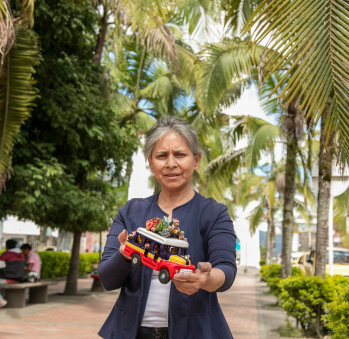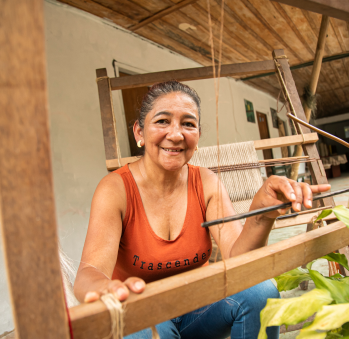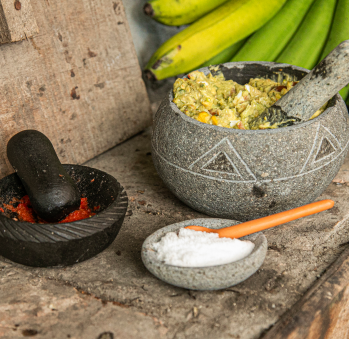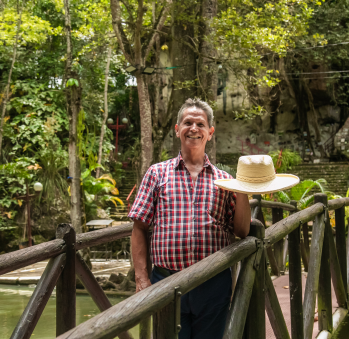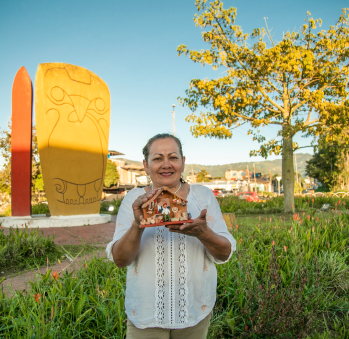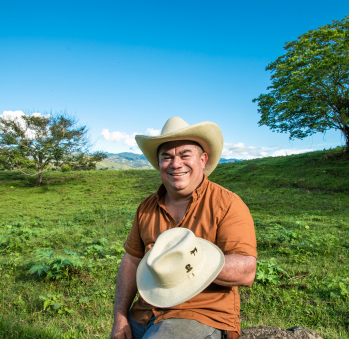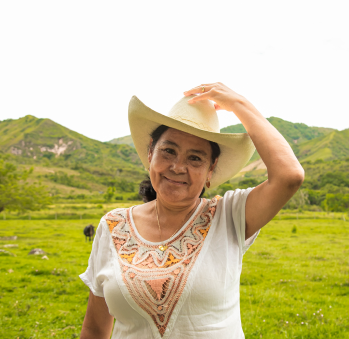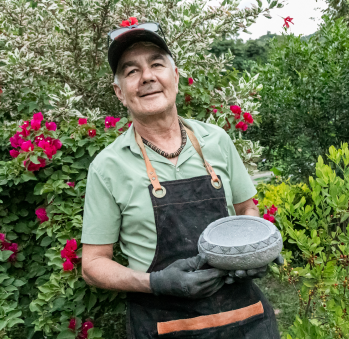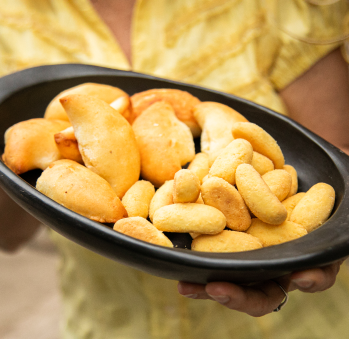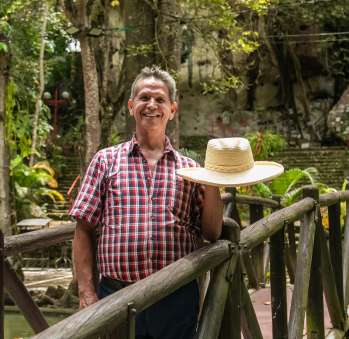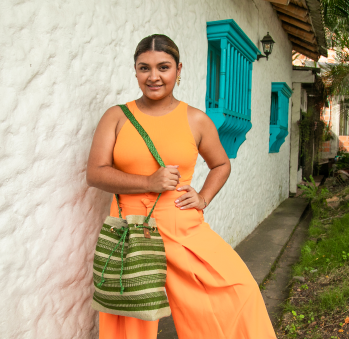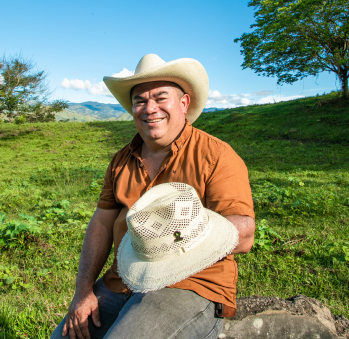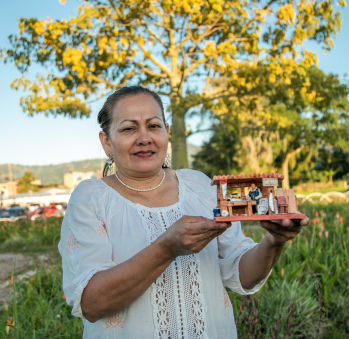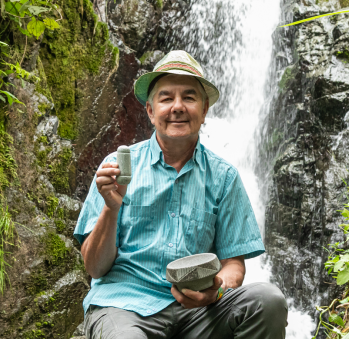Huila Route
Huila is so diverse that within its landscapes, you can witness everything from a highland to a desert as wide and rambling as the Tatacoa desert. The same holds true for its artisanal expertise and traditional cuisines, which can’t be counted on just one hand. Among weavers, carvers, and potters, you’ll come to understand that traditions are what bind the department together. Its people, known as opitas, are dedicated to keeping these traditions alive, passing them down, and celebrating them. That’s why it’s a joy to savor their history through a Huila-style barbecue, cooked in the traditional ovens found in every countryside home, or to experience it by watching a couple dance the “sanjuanero” during the San Juan and San Pedro festivals at the end of June. Beyond tradition, the Magdalena River connects the department. Rising in its southern reaches, despite not being the longest or most voluminous, it’s the country’s main river artery. The river traverses Huila and ties together its diverse artisanal practices. It’s from the riverbed that carvers gather the finest stones, and from its waters that nourish plants such as pindo, fique and iraca, that will later be used by the weavers for their craft. We invite you to embark on a journey from north to south, tracing the Magdalena River back to its source. This route is brimming with contrasts: it takes you from the heat of Neiva to the temperate climate of San Agustín, and from bizcocho de achira to stone-cooked arepas. Along the way, you’ll encounter dedicated artisans and have the opportunity to taste traditional foods such as quesillo, pork preparations like lechona huilense, the thin arepas known as oreja de perro, the sweet treat dulce de nochebuena, and mistela for the thirst.
Embark on a journey full of history

Artisans along the way
Artisans along the way
We recommended this tour
Schedule the visit in advance with the artisans.
Carry cash.
5 days
Car or Bus

Neiva — Palermo — La Jagua
Our journey begins in Neiva, the first capital city that the Magdalena River flows through in the country. This warm city allows you to immerse yourself in history before moving on to more artisanal municipalities. Visit the José Eustasio Rivera Convention Center, where you’ll find the Museum of Sanjuanero Huilense, the regional archaeological museum, and the Jorge Villamil Cordobes Museum. Take a walk through the city, exploring the Music Park, the Cathedral of the Immaculate Conception in Santander Park, and the monument to Cacica la Gaitana. Afterward, head to the riverside to enjoy lunch at the restaurant Gran Vinos.
Just 24 kilometers from Neiva is Palermo, our first artisanal stop. Here, you’ll meet Ernesto Gutiérrez and the community of pindo hat weavers, used for dancing the sanjuanero. Visit the Santa Rosalía Sanctuary and take a stroll through the central park while enjoying the local drink, a sevillana, before returning to Neiva for the night.
Located 120 kilometers away from Neiva is La Jagua. This former indigenous worship site has transformed into a picturesque town with cobblestone streets and colonial houses. It hosts the Festival of Witches at the end of October. In La Jagua, you’ll meet the fique weavers, who will introduce you to the magical process at their association’s headquarters, Artefique. Visit the church and savor a delicious rice plate called arroz tapado. Before resting for the night, have dinner at El embrujo de Aldaban restaurant and satisfy your sweet tooth at Postres Santacruz.
La Jagua — Suaza — Pitalito
Just 32.8 kilometers from La Jagua is Suaza, home to the traditional iraca hat, a heritage upheld by artisans like Gerardo Hurtado. Explore the Casa del Sombrero Suaza Museum, the Sanctuary of the Virgin of Aransazu, and if you’re into ecotourism and adventure, don’t miss the Cueva de los Guácharos National Park in Acevedo, a half-hour drive from Suaza. On your way to Pitalito, which is 58 kilometers away and where you’ll spend the night, indulge in Altamira’s achiras accompanied by a refreshing aguapanela.
Pitalito — San Agustín
In addition to being the country’s top coffee producer, Pitalito is renowned for its customary ceramics, which you can learn about from Rubiela León and Ruth Polo, who manufacture intricate chivas (artisanal buses), and nativity scenes. If you’re traveling in November, you’ll enjoy the National Crafts Fair of Pitalito. Throughout the year, you can visit the Museum of Archaeology and Art and the Costumbrist Museum Huellas del Pasado. Just a half-hour from the city is the Guaitipan lagoon, an enchanted place full of stories about goblins and mermaids. We recommend trying the trout or fiambre and spending the night here before heading to our final destination, San Agustín, which is 32 kilometers away.
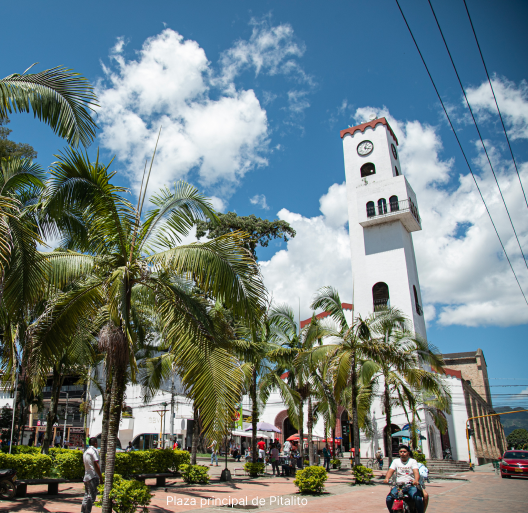
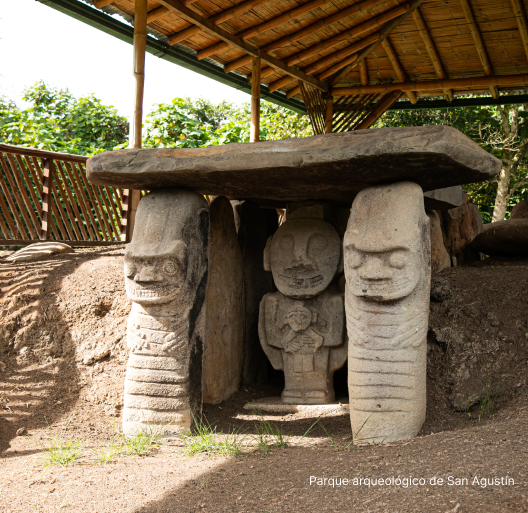
San Agustín
San Agustín is the realm of carvers and a proof of it are the anthropozoomorphic statues of the Archaeological Park, a must-see. You can learn more about carving at Jaime Ledesma’s workshop, and then, visit Litsbina Becerra to marvel at the technique her mother invented, the plantain fiber weaving, and savor her delicious stone-cooked arepas. This municipality also boasts valuable natural destinations like the Tres Chorros waterfall, the trails of Puerto Quinchana, and the Magdalena river’s narrowest point and its petroglyphs. After exploring San Agustín and savoring a roasted cuy or guinea pig, you can decide whether to extend your journey and head to the Magdalena lagoon, situated at an altitude of 3,327 meters above sea level, where the river that accompanied you throughout this trip originates.
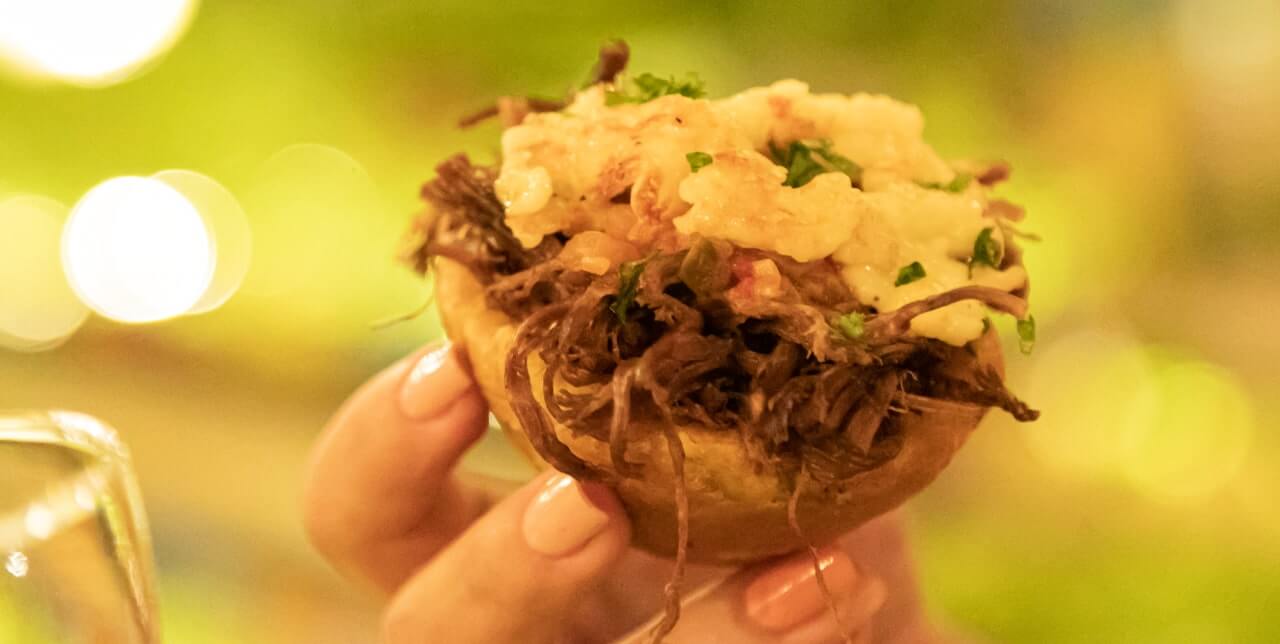
Traditional cuisine
and typical bites
Provoke yourself

Don't leave without eating this 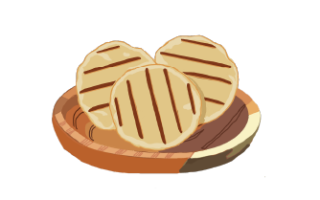
En el Huila encontramos tres alimentos con denominación de origen protegida: La Cholupa del Huila, El bizcocho de Achira del Huila y el Café del Huila. Esos serán nuestros imperdibles y hay que procurar probarlos en los diferentes lugares durante toda la visita en nuestra ruta. El Huila es una gran despensa, razón por la cual encontraremos diversos y exquisitos ingredientes como pescados de río (tilapia), carne de cerdo, arroz, frutas cítricas y cacao, entre otros. Además, tendremos platos de la cocina tradicional como el asado huilense, Juan Valerios y arroz tapao. Así que vamos a comernos y a disfrutar esta ruta.
To lunch we go 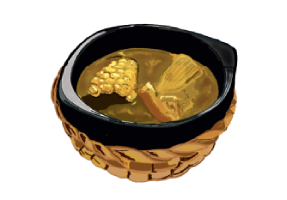
- El asado huilense es un plato típico que consiste en una carne de cerdo adobada con cerveza, naranja agria, cilantro cimarrón, orégano de hoja ancha, laurel, tomillo, poleo, pimienta guayabita, cebolla larga, ajo y se asa en horno de barro. El asado se acompaña con arepas oreja de perro, insulso de arroz (un amasijo de arroz envuelto en hoja de plátano), yuca, plátano asado y envuelto de banano. Es un plato delicioso y nutritivo que representa la cultura y la gastronomía huilense. Este plato se suele preparar para celebrar ocasiones especiales como las fiestas de San Pedro o para compartir en familia y con amigos. Para disfrutarlo en cualquier época del año lo pueden hacer en La Casa del Folclore en Neiva.
- En el municipio de Garzón, producto del azar culinario, nació el emblemático arroz tapao, un plato que refleja la riqueza del departamento. Una corona de arroz blanco se rellena con una salsa que puede llevar pollo, champiñones y una salsa roja natural a base de tomates. Todo esto se cubre con trozos de tocineta ahumada y se cubre completamente con papa en biruta o fosforito. Así se tapa completamente este arroz, convirtiendo el contenido en una sorpresa para el comensal. El más reconocido se come en el Restaurante Hacienda La Floresta, pero se consigue en muchos lugares del municipio.
- Pollo asado de Las Vegas. Una receta de pollo asado al carbón que desde 1973 deleita a las familias opitas y se volvió parada obligada para las personas que pasan por Neiva. La familia Charry Dussán mantiene la receta original y desarrolla diferentes platos muy tradicionales como el arroz con pollo, el consomé de pollo y los huesos de marrano, todos con la mejor calidad como muestra de la despensa del departamento.
- Tilapia o mojarra. Existen diferentes preparaciones que involucran este espectacular producto que se cultiva en aguas de la represa de Betania o incluso alrededor de toda la rivera del Río Magdalena. La calidad del agua ha convertido al departamento del Huila en el mayor productor de Tilapia de nuestro país y se exporta buena cantidad de este producto a los diferentes mercados internacionales. Un restaurante que expone la mejor presentación de este producto es Gran Vinos, en Neiva, donde además se ofrece una espectacular vista al Magdalena.
Flavors to discover and snack on 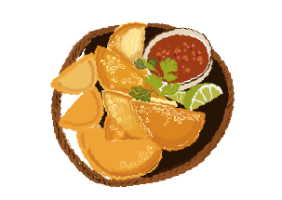
- La cholupa del Huila es una fruta exótica y deliciosa que se cultiva en la zona de Rivera en este departamento. Es una especie de passiflora, como el maracuyá, la granadilla o la curuba, pero tiene características únicas que la hacen especial. Su cáscara es dura y de color verde, y su pulpa es gelatinosa de color amarillo pálido, de sabor agridulce y muy aromática. La cholupa madura cae al suelo y se recoge cuando está lista para consumir o procesar. Tiene Denominación de Origen desde el año 2007, lo que significa que es un producto único en el mundo. Los productores, comercializadores y emprendedores de la cholupa han creado diversos productos derivados, como salsas, mermeladas, jugos, vinos y cervezas. En todo el departamento es común encontrar esta fruta preparada en jugo y en la actualidad se están haciendo otras preparaciones con esta exótica fruta. Su preparación en jugo es la bebida insignia de todas las casas y restaurantes.
- El bizcocho de achira del Huila, es una delicia típica de la región, que se prepara con el almidón de una planta llamada achira o sagú. Esta planta es originaria de Sudamérica y fue usada por los pueblos prehispánicos para su alimentación. La achira tiene un sabor crocante y salado, y se suele acompañar con bebidas calientes y frías. Para hacerlo, se necesita almidón de achira, cuajada fresca, mantequilla y yemas de huevo. Se mezclan todos los ingredientes hasta formar una masa suave, que se corta en trozos pequeños y se hornea en un horno de barro. El resultado es un pasaboca delicioso, que representa la tradición gastronómica del Huila y el sustento de muchas familias de la región. Este producto se puede conseguir en las bizcocherías de Fortalecillas, de Altamira y por supuesto de Neiva. Paso obligado de la visita: Bambuqueras – La Especial y/o La Mejor en Neiva.
- Los Juan Valerios se preparan con plátanos verdes fritos, tocino frito, cebolla larga y ajo. Son fáciles y rápidos de hacer, y se pueden servir calientes o fríos. Luego del plátano cocinado se arman unas bolitas que se mezclan con el chicharrón y el aliño. A diferencia de las marranitas vallunas no tienen una segunda fritura. Bocado típico que se consigue en diferentes comidas de barrio y nuestra recomendación en Neiva es probarlo en La Parrilla del Gordo Peñuela.
- Arepa oreja de perro, es una deliciosa y tradicional arepa que se hace con arroz o maíz y que se sirve con el famoso asado huilense, una carne adobada y cocinada a la brasa. La arepa oreja de perro, de bordes tostados y crujientes, tiene ese nombre porque es muy delgada, como las orejas de un perro. Esta arepa es típica de los departamentos de Tolima y Huila, en la región andina de Colombia, donde el Río Magdalena atraviesa sus valles y mesetas. Esta arepa es una herencia de los antepasados indígenas que cultivaban el maíz y lo molían para hacer harina. Hoy en día, se puede hacer también con arroz, que se deja remojar toda la noche, se licua y se cocina hasta formar una masa. Luego, se hacen discos muy finos con la masa y se asan en una plancha o un budare hasta que queden dorados y crocantes. Es un acompañamiento perfecto para la lechona, el chorizo, los huevos, la morcilla y otros productos de la región. También se puede comer con queso, mantequilla o mermelada. Esta arepa es una delicia que representa la cultura y la historia de esta zona de Colombia, donde el maíz, el arroz y el Río Magdalena son sus protagonistas.
To sweeten the palate and unmissable drinks 
- Ponqués La Granadina es un lugar muy reconocido pues conserva las recetas que fueron diseñadas en los años 40 por el abuelo de Luisa Peñaranda, de quien hoy se tienen sus notas a mano para formular sus tortas. Allí es famoso el ponqué de novia (torta negra envinada), el pastillaje y diferentes postres porque, a pesar de mantener la tradición, también se han dedicado a desarrollar nuevos productos para sorprender a sus comensales.
- Con una propuesta en panadería y pastelería muy destacada vale la pena señalar a Serendipia, donde una casa rosada devela una singular experiencia que integra tradiciones e innovaciones, desde un sencillo pero delicioso jugo de cholupa endulzado con un trozo de caña hasta la encopetada Red Velvet o torta de chocolate que hoy endulza el paladar de los neivanos.
- La mistela es una bebida típica de esta región de Colombia, que se prepara con aguardiente, azúcar y frutas o hierbas aromáticas. Se dice que se originó como una alternativa al aguardiente puro, que se consideraba muy fuerte para las mujeres. La mistela se macera al sol durante varios días y se sirve fría o a temperatura ambiente. Es una bebida deliciosa y refrescante, ideal para celebrar las fiestas tradicionales del Huila, como las de San Juan y San Pedro. Así que hay que aprovechar y pasar por el Pasaje Camacho donde encontrarán también Sevillanas, diferentes jugos, incluido por supuesto el de Cholupa y otras bebidas.
- El Café del Huila se caracteriza sensorialmente por poseer una impresión global balanceada, con notas dulces, acidez y cuerpo medio/alto, fragancia/aroma intenso con sensaciones frutales y acarameladas. Debe ser producido en un rango de altura entre 1.000 y 2.200 metros sobre el nivel del mar. Prácticamente todos los cafés de la región son promotores de la famosa bebida, así que aprovechen el recorrido y visiten una tienda de café como puede ser Soca o Cadefihuila o Kahvé.
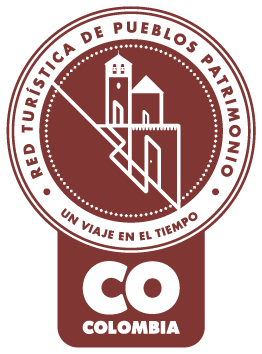
Pueblo Patrimonio
La Red Turística de Pueblos Patrimonio de Colombia es un programa especial del Ministerio de Comercio, Industria y Turismo, ejecutado por FONTUR, que trabaja con 17 municipios de Colombia que poseen declaratoria de Bien de Interés Cultural (BIC) a nivel nacional para su valoración y proyección mediante el turismo, generando así más oportunidades de desarrollo y sostenibilidad en las comunidades.

La Medalla a la Maestría Artesanal es un galardón que Artesanías de Colombia entrega anualmente, con el cual se hace un reconocimiento a aquellos artesanos, empresas y comunidades artesanales que, contando con una trayectoria destacada, sobresalen a nivel nacional por su excelencia en el oficio así como por preservar el quehacer artesanal.

Denominación de Origen
Es un signo distintivo que identifica productos reconocidos o famosos por tener una calidad o características específicas derivadas esencialmente del lugar de origen y la forma tradicional de extracción, elaboración y producción por parte de sus habitantes. La protección conferida sobre una Denominación de Origen implica que ninguna persona puede identificar con la denominación protegida productos iguales o similares a los amparados, cuando no provengan del verdadero lugar y no cumplan con las características o calidades que le han dado la reputación al producto reconocido. Las Denominaciones de Origen para productos artesanales colombianos que han sido protegidas por la Superintendencia de Industria y Comercio en nuestro país son actualmente 12.
No puede copiar contenido de esta página









































